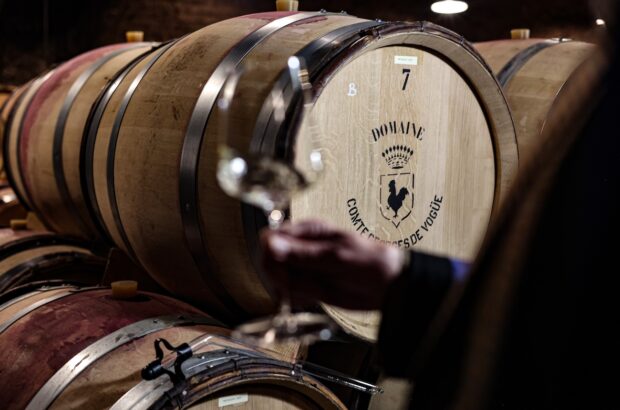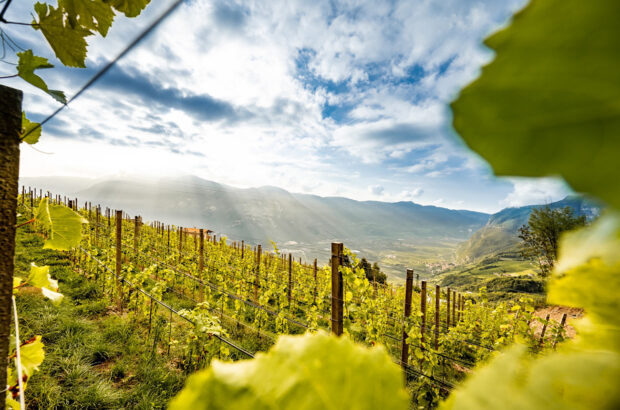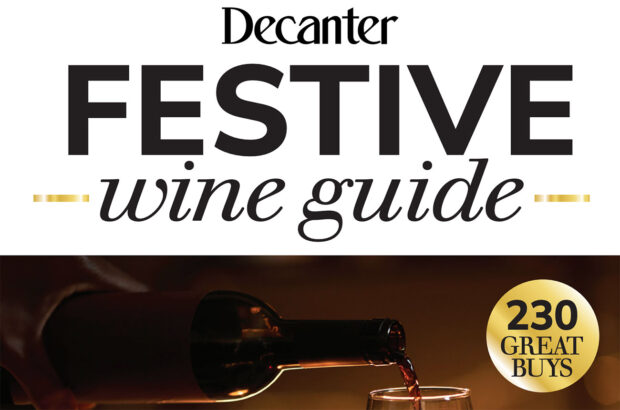Dazzling, intense, less austere than its neighbour Hermitage, Côte-Rôtie produces some of the world's greatest Syrah. STEPHEN BROOK pays a visit.
DRIVING down the Rhône Valley, it’s hard to miss the imposing vineyards of Côte-Rôtie, towering over the small town of Ampuis. From afar, the vineyards look monolithic, but up close you can see how varied are the expositions. Some sites face due south, but most twist and turn along the slopes, with vines clinging to narrow terraces.
They’re steep too, even if Mosel grower Ernst Loosen was unimpressed. ‘They call that steep,’ he sniffs. ‘I call it a holiday.’ But to those of us not used to being winched up the Mosel slopes on pulleys, Côte-Rôtie is steep enough.
Together with Hermitage, Côte-Rôtie can claim to be the source of the world’s greatest Syrah. Twenty years ago, Hermitage was seen as the muscular Syrah, Côte-Rôtie its more feminine cousin. Great Hermitage remains the more austere, but Côte-Rôtie is no wimp. It dazzles with its sheer intensity of flavour.
https://www.decanter.com/premium/know-white-hermitage-420271/
The big names
For some time Côte-Rôtie has been dominated by the firm of Guigal, and by a handful of well-known growers such as Jasmin, Barge, Jamet and Rostaing. But changes are afoot. The 200ha (hectares) of vineyards are divided among 130 growers. Until recently, many of these sold their grapes to negociants such as Guigal, but more and more are now setting up on their own. At his domaine, Jean Garon produces a mere 8,000 bottles a year, a production that will increase once new vineyards, reclaimed from sites abandoned years ago when deemed too steep, have been replanted. The same is true of Martin Daubrée, who has kept his day job but spends his spare time restoring tiny parcels abandoned after World War I, rebuilding terraces and replanting the vines. Production is minuscule, at 6,500 bottles, but will rise.
Many New World producers of Syrah/Shiraz look to Côte-Rôtie as their benchmark, religiously blending in some Viognier in their fervour. It’s true that AC regulations permit the addition of up to 20% of this white grape, and a few wines do contain a small percentage. But equally, many are pure Syrah. Let’s nail this myth: the inclusion of Viognier in some Côte-Rôtie wines is not a stylistic choice. Viognier just happens to be planted within the same vineyards and can’t easily be separated from Syrah without considerable additional expense at harvest time.
‘I recently ordered some Syrah vines,’ explains René Rostaing, ‘and when the first bunches ripened, I realised to my astonishment that quite a few of them were Viognier. The confusion exists even in the nurseries. Condrieu is our neighbour, and inevitably the vineyards have become slightly muddled over time.’
Michel Chapoutier gives another explanation, although Rostaing doubts whether it is true. Adding Viognier, says Chapoutier, is a surreptitious chaptalisation, since the white grapes usually have at least one degree more of potential alcohol. But producers are moving away from adding Viognier, except when, as in the case with Guigal’s La Mouline, it’s unavoidably present in the vineyard.
https://www.decanter.com/features/viognier-246278/
Côte-Rôtie is still very much a hand-crafted wine. Brigitte Clusel-Roch of Domaine Clusel-Roch seems to know almost every plant by name. And growers can all reel off the names of the lieux-dits – La Landonne, Les Grandes Places, Les Rochains – where their prized parcels are located. There is some dispute as to the quality of the vines planted on the so-called plateau at the top of the cliffs. Clusel-Roch is an advocate, because of the poverty of the soil; however, the elevation means that the grapes ripen later, which can be a disadvantage.
keeping yields down
All growers agree that the sole secret of good winemaking here is yields. In generous years such as 2000 and 2001, growers green-harvested like mad to keep yields between 30 and 40 hectolitres per hectare. There are a few dilute wines, but these are in the minority. Almost all modern Côte-Rôtie is deeply coloured and rich in flavour, becoming more flamboyant and spicy with age.
There is less uniformity when it comes to winemaking styles. Not everyone destems grapes, for instance. Jean-Michel Gérin destems everything at his domaine, ‘except,’ he says, ‘in a great year, when I may retain a small proportion’. René Rostaing likes to retain about half, as long as they are ripe. ‘Stems are part of the vine,’ he says, ‘and I feel they make the wine more complete, more individual. But it’s an intuitive matter.’ Clusel-Roch only removes about one third of the stems, believing their retention reduces the cap’s density during fermentation and gives the wine more freshness. Bernard Burgaud, however, at his eponymous winery, adamantly opposes the practice, arguing that stems lead to lighter colour and coarser tannins.
It was Marcel Guigal who introduced the idea of barrique ageing to Côte-Rôtie, notably with his great single-vineyard wines, La Landonne, La Mouline and La Turque, which are aged for 42 months in new oak. Although the exclusive use of new oak remains rare, the use of barriques is now very common. A few producers, such as Rostaing, Jamet and Jasmin, like to use barrels of 500 or 600 litres as well. Most are cautious about the use of new oak, which usually varies from 10% to 30%, although in the case of special cuvées or cru bottlings, that may increase significantly. Producers keen on new oak include Guigal and Gérin, though their wines rarely taste over-oaked. (The 1998 Château d’Ampuis from Guigal is rather too chewy for its own good, but should become more succulent with age.) Syrah is a reductive variety that easily acquires off-aromas; the gentle oxidation of barrique-ageing helps to moderate this tendency.
the single cru way Guigal’s singling out of crus for separate bottlings has started a trend, but some resist the idea. Burgaud dislikes them: ‘This isn’t the tradition here. It’s disastrous if you produce a great wine from your best site, and a mediocre wine for your regular bottling. What’s more, many special cuvées are alike, especially if they’re aged in new oak. I prefer to make a single wine, with the option of selling off anything that doesn’t meet my standards. Anyway,’ he adds, ‘individual sites don’t always make the best wines. In 1990 they flowered first, making them more prone to blocked maturation during the summer heat. Grapes on cooler, more backward soils suffered less stress and gave better wine.’
Rostaing, who releases bottlings from La Landonne and Côte Blonde, admits that occasionally a top site can fail to deliver. ‘But even if La Landonne, for example, doesn’t always make the best wine, there’s pleasure in validating a great terroir, just as in Burgundy.’ To prove his point, he concocted a blend from barrel samples of his three wines and handed me the glass. It was indisputably richer than his standard Côte-Rôtie.
‘Of course,’ he conceded. ‘But this blend lacks soul. It’s good wine, but it has no expression of terroir.’ I’ll give the argument to Rostaing. Guigal has shown that sites such as La Mouline do have specific personalities, as those lucky enough to have participated in blind tastings of these crus can testify.
There were some duff vintages in the early 1990s – notably 1992 and 1993 – but since 1995 quality has been high, and earlier years such as 1990 and 1991 have stood the test of time. In most growers’ view, 1999 is the best vintage ever made here. 2001 is superior to 2000, but barrel samples of the latter have been impressive.
The roster of top producers hasn’t changed much: Guigal, Chapoutier, Burgaud, Clusel-Roch, Gérin, Jamet and Rostaing. But there’s a new generation, either taking over family properties or vinifying grapes formerly sold to négociants. These include Bonnefond, Cuilleron, Daubrée, Garon, Ogier and Stéphan. Never has the choice been so great.







